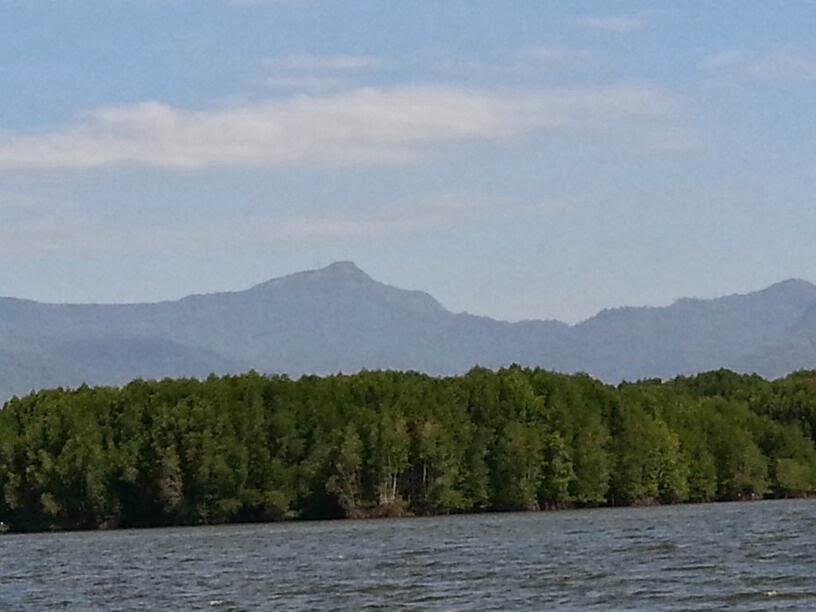Penerbitan baru dari Ahli HGRG untuk 2014
KERJA LAPANGAN: TEKNIK, PROSEDUR DAN APLIKASI DALAM GEOGRAFI
oleh Wan Ruslan Ismail, Narimah Samat dan Nooriah Yusof
Buku ini membincangkan tentang kaedah dalam menjalankan beberapa kajian lapangan geografi fizikal, teknik dan geografi manusia.
Sunday, February 23, 2014
Sunday, February 16, 2014
PERSAMPELAN DI SUNGAI MERBOK
Aktiviti persampelan kali ini dijalankan pada 15 Februari 2014 di Sungai Merbok yang meliputi 6 stesen bermula dari Stesen Semeling hingga ke Sg Dedap/Bujang dengan menaiki bot. Persampelan ini dijalankan sebulan sekali dalam tempoh setahun untuk mengkaji kualiti air berdasarkan beberapa parameter fizikokima yang diambil di lapangan serta parameter nutrien akan dikaji melalui prosedur analisis kimia di Makmal Hidrologi, USM.
Gambar sebelum aktiviti persampelan dijalankan. Lokasi: Jeti Merbok
Dari kiri: Prof Wan Ruslan, En Adam, Cik Noraini Misnan, Cik Syazwani, En. Mohd Khusyairi
Pemberat Ladung: Digunakan untuk mengukur kedalaman air.
Water sampler: Alat ini digunakan untuk mengambil air mengikut kedalaman yang dikehendaki.
Pemandangan indah di Sungai Merbok yang berlatarbelakangkan Gunung Jerai
Wednesday, February 12, 2014
Pengumuman Persidangan Tahun 2014
1. Non Point Source Pollution 2014 First National Conference on Non Point Source Pollution NPS 2014 akan diadakan di Vivatel Hotel- Kuala Lumpur, 85, Jalan Loke Yew Kuala Lumpur pada 13-14 May 2014.
Why NPS?
It is widely known that surface water can be degraded due to Point Source (wastewater from domestic, commercial, industrial uses) and Non-Point Source (NPS) pollution (urban and agricultural runoff). However, water quality degradation due to NPS is more difficult to monitor and control compared to PS as it does not originate from a single discrete source.
Sources of NPS pollution can be divided according to its land use such as from agricultural, forestry or urban area. Types of NPS pollutants based on its land use are oil, grease, chemicals, pet wastes, faulty septic systems (urban areas), fertilizers, pesticides, salt, pathogens from livestock operations (agricultural lands) and sediment (forest lands).
The NPS pollution has following characteristics:
(i) compared to point sources pollution, the sources of NPS pollution are wide spread where pollutants are discharged into receiving waters in diffuse manner and strongly influenced by storm characteristics.
(ii) The pollutants generation processes usually occur over the entire land surface area. Before pollutants enter a water body, there are transport processes that occur over a wide region, accompanied by dissolution, dispersion and infiltration.
(iii) NPS pollutants are usually discharged at unknown instants of time into water system with uncertain values of concentration. These factors are influenced by unexpected naturalconditions or the accidental discharge of pollutants.
(iv) The extent of nonpoint source pollution is determined by many factors which are related to climatic events, geographic and geologic features. It may show large temporal and spatial variations.
Stormwater runoff acts as transport agent for NPS pollutants. In general, major pollutants found in urban stormwater runoff are suspended solids, detergents, heavy metals and sewage discharges while agricultural runoff pollutants includes fertilizer, pesticides, sediment (eroded soil), oxygen demanding matters, faecal bacteria from feedlot, oil spill and excess nutrients (Nitrogen and Phosporus) .
NPS pollution causes:
- Eutrophication of lakes and streams (loss of biodiversity in aquatic environment).
- Soil contamination by heavy metals and the accumulation of pesticide residues in food.
- Contribute to land degradation and causes arable land to be unproductive.
Laws or regulations in Malaysia to monitor and control NPS pollution are un-stringently enforced as the sources are numerous and diverse.
More info sila lawat http://www.utm.my/nps2014/


More info sila lawat http://www.utm.my/nps2014/
2. ICCE/IAHS 2014 symposium, New Orleans. USA. Dec 11- 14, Astor Crown Plaza, New Orleans
This International Symposium on Sediment Dynamics: From the Summit to the Sea is part of a series of symposia organized under auspices of The International Commission on Continental Erosion (ICCE), which is one of ten commissions of the International Association of Hydrological Sciences (IAHS).
Session Themes
- Monitoring and modeling erosion on hills, floodplains, and coastal shorelines
- Monitoring and modeling sediment transport in streams, rivers, and estuaries
- Erosion and sediment-associated chemical transport and pollution across landscape and waterscape
- Land use and climate change effects on erosion and sediment transport
- Interactions between sediment hydrodynamics, channel morphodynamics, river delta, and coastal processes
3. International Association for Sediment and Water Science ( IASWS) Conference at Grahamstown South Africa, 15-18 July 2014. Details please contact http://www.iasws2014.co.za/
Note: Prof Wan Ruslan is the Director at Large for IASWS from 2011-2014.
Subscribe to:
Comments (Atom)










































